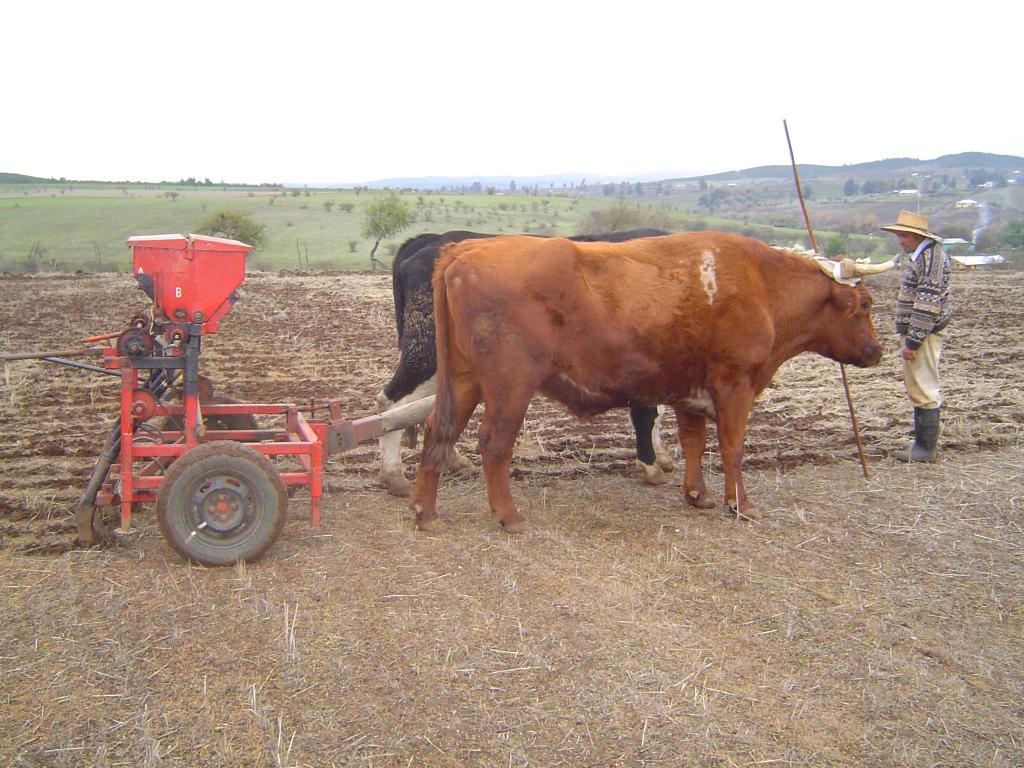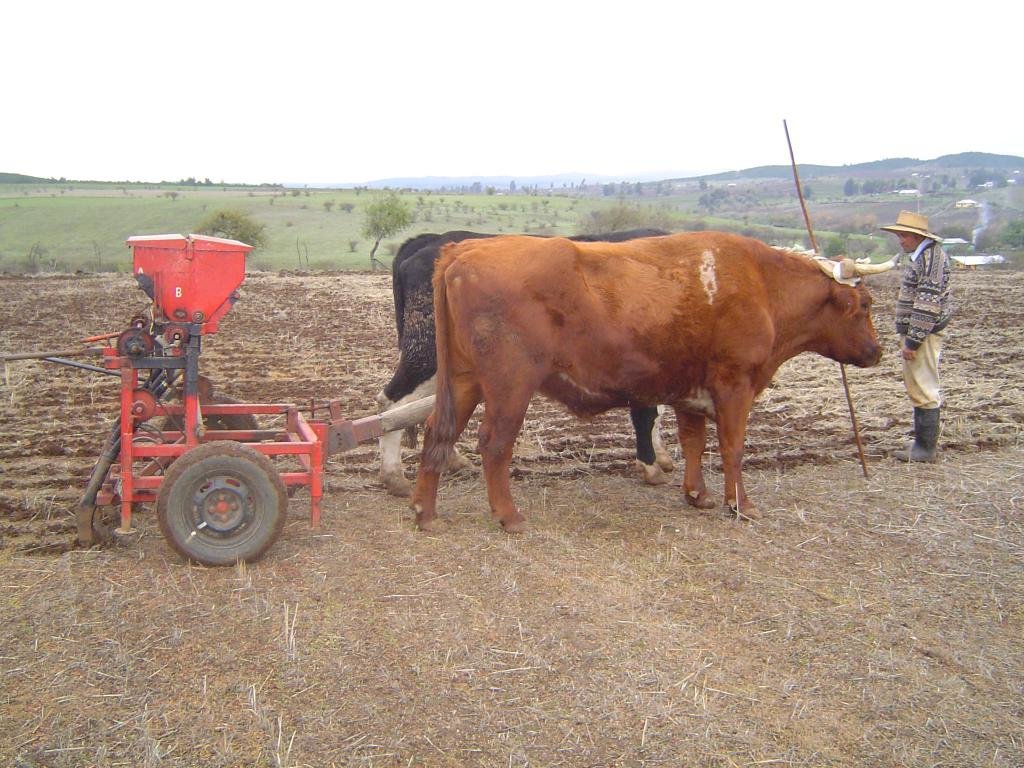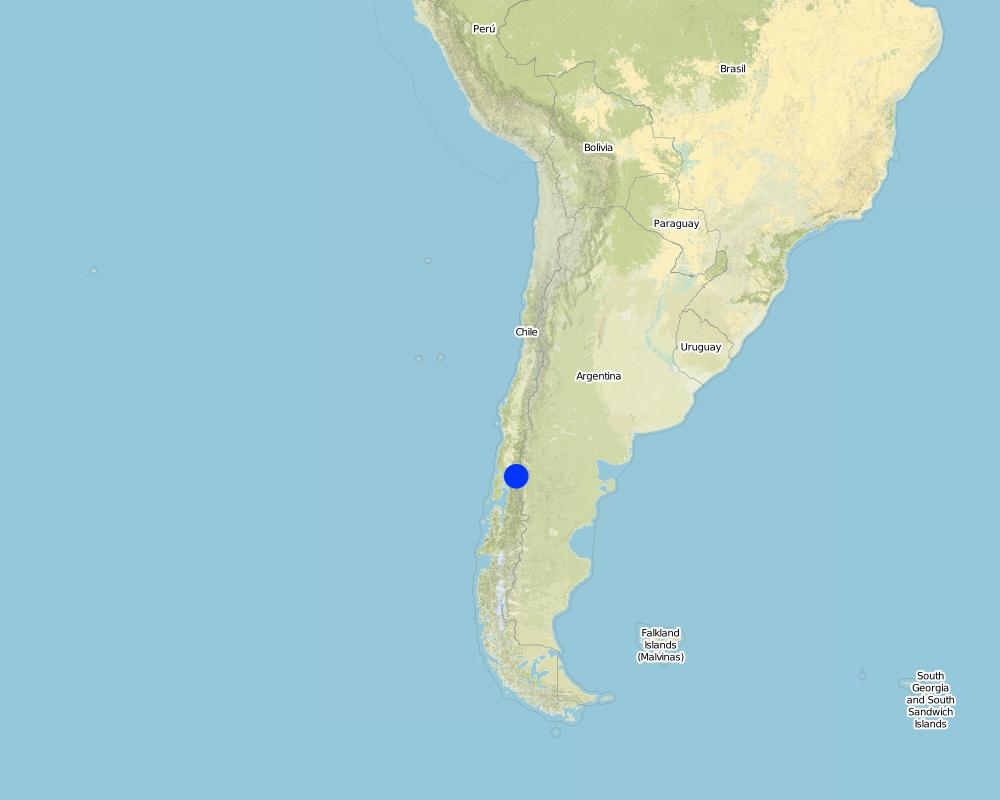Zero Tillage [Chile]
- Creation:
- Update:
- Compiler: Carlos Ruiz
- Editor: –
- Reviewer: Fabian Ottiger
approaches_2655 - Chile
View sections
Expand all Collapse all1. General information
1.2 Contact details of resource persons and institutions involved in the assessment and documentation of the Approach
SLM specialist:
SLM specialist:
Name of the institution(s) which facilitated the documentation/ evaluation of the Approach (if relevant)
Instituto de Investigaciones Agropecuarias (INIA) (Instituto de Investigaciones Agropecuarias (INIA)) - ChileName of the institution(s) which facilitated the documentation/ evaluation of the Approach (if relevant)
Asociación para la Diversificación y el Desarrollo Agricultural Comunal (ADDAC) - Nicaragua1.3 Conditions regarding the use of data documented through WOCAT
The compiler and key resource person(s) accept the conditions regarding the use of data documented through WOCAT:
Ja
2. Description of the SLM Approach
2.1 Short description of the Approach
Zero tillage approch was developed to protect the soil of de rainfall
2.2 Detailed description of the Approach
Detailed description of the Approach:
Methods: Zero tillage is realized with a crop rotation cereal-pastures, with elimination of traditional fire practices and fallow, supported with organic manure, zero tillage practice (horse drawn tillage and with machinery).
2.3 Photos of the Approach
2.5 Country/ region/ locations where the Approach has been applied
Country:
Chile
Region/ State/ Province:
Chilán, Chile
Map
×2.6 Dates of initiation and termination of the Approach
Year of termination (if Approach is no longer applied):
2009
2.8 Main aims/ objectives of the Approach
The Approach focused mainly on other activities than SLM (Zero tillage, dry and semi-dry land)
To apply conservation tillage for agricultural development.
The SLM Approach addressed the following problems: Social conflict and low knowledge in agricultural machinary.
2.9 Conditions enabling or hindering implementation of the Technology/ Technologies applied under the Approach
social/ cultural/ religious norms and values
- hindering
Traditions
Treatment through the SLM Approach:
legal framework (land tenure, land and water use rights)
- hindering
The existing land ownership, land use rights / water rights moderately hindered the approach implementation The research was successfull but with difficult in the applicatio
knowledge about SLM, access to technical support
- hindering
Lack of knowledge in agricultural machinery
Treatment through the SLM Approach:
3. Participation and roles of stakeholders involved
3.1 Stakeholders involved in the Approach and their roles
- local land users/ local communities
Cultural differences. Ussually women work at home although women participated in planning decissions
- NGO
- national government (planners, decision-makers)
- international organization
If several stakeholders were involved, indicate lead agency:
Was conisedered the integration and consideration of the gender.
3.2 Involvement of local land users/ local communities in the different phases of the Approach
| Involvement of local land users/ local communities | Specify who was involved and describe activities | |
|---|---|---|
| initiation/ motivation | interactive | |
| planning | interactive | |
| implementation | interactive | |
| monitoring/ evaluation | interactive | |
| Research | interactive |
3.4 Decision-making on the selection of SLM Technology/ Technologies
Specify who decided on the selection of the Technology/ Technologies to be implemented:
- mainly SLM specialists, following consultation with land users
Explain:
From the interaction between japanesse experience and chilean expertise
4. Technical support, capacity building, and knowledge management
4.1 Capacity building/ training
Was training provided to land users/ other stakeholders?
Ja
Form of training:
- courses
Subjects covered:
25 chilean professionals were trainning in Japan (short courses of 1 month).
4.2 Advisory service
Do land users have access to an advisory service?
Ja
Specify whether advisory service is provided:
- on land users' fields
- at permanent centres
Describe/ comments:
Name of method used for advisory service: In situ demonstration and trainning; Key elements: Demonstration, Farmer visit
Advisory service is quite adequate to ensure the continuation of land conservation activities; Chilean agricultural politics give to the farmers big part of the responsability, after a powerfull support from the government.
4.3 Institution strengthening (organizational development)
Have institutions been established or strengthened through the Approach?
- yes, moderately
Specify the level(s) at which institutions have been strengthened or established:
- local
4.4 Monitoring and evaluation
Is monitoring and evaluation part of the Approach?
Ja
Comments:
technical aspects were monitored through observations
socio-cultural aspects were monitored through observations
economic / production aspects were monitored through observations
There were many changes in the Approach as a result of monitoring and evaluation: Technical recommendation were improve (cultives and machine)
4.5 Research
Was research part of the Approach?
Ja
Give further details and indicate who did the research:
The institutions were mainly focused on physical soil structure, increasing yield and water conservation
Research was carried out both on station and on-farm
5. Financing and external material support
5.1 Annual budget for the SLM component of the Approach
If precise annual budget is not known, indicate range:
- > 1,000,000
Comments (e.g. main sources of funding/ major donors):
Approach costs were met by the following donors: international (tillage machine): 25.0%; government (incentive): 25.0%; local community / land user(s) (land and working): 50.0%
5.2 Financial/ material support provided to land users
Did land users receive financial/ material support for implementing the Technology/ Technologies?
Ja
5.3 Subsidies for specific inputs (including labour)
- agricultural
| Specify which inputs were subsidised | To which extent | Specify subsidies |
|---|---|---|
| seeds | partly financed | |
If labour by land users was a substantial input, was it:
- voluntary
Comments:
Active participation of farmers.
5.4 Credit
Was credit provided under the Approach for SLM activities?
Nee
6. Impact analysis and concluding statements
6.1 Impacts of the Approach
Did the Approach help land users to implement and maintain SLM Technologies?
- No
- Yes, little
- Yes, moderately
- Yes, greatly
Improvement the soil infiltration and mitigation soil erosion
Did the Approach improve issues of land tenure/ user rights that hindered implementation of SLM Technologies?
- No
- Yes, little
- Yes, moderately
- Yes, greatly
Social problems The problem is likely to be overcome in the near future. Farmers prefer personal solution.
Did other land users / projects adopt the Approach?
- No
- Yes, little
- Yes, moderately
- Yes, greatly
It was observed that the adoption of the technology depend from the market (prices)
6.2 Main motivation of land users to implement SLM
- reduced workload
- payments/ subsidies
- affiliation to movement/ project/ group/ networks
6.3 Sustainability of Approach activities
Can the land users sustain what has been implemented through the Approach (without external support)?
- uncertain
6.4 Strengths/ advantages of the Approach
| Strengths/ advantages/ opportunities in the land user’s view |
|---|
| technology behaviour (How to sustain/ enhance this strength: it depends) |
| Strengths/ advantages/ opportunities in the compiler’s or other key resource person’s view |
|---|
| productives (How to sustain/ enhance this strength: financial support from the government) |
| economic (How to sustain/ enhance this strength: insumes (uncertainty costs).) |
6.5 Weaknesses/ disadvantages of the Approach and ways of overcoming them
| Weaknesses/ disadvantages/ risks in the land user’s view | How can they be overcome? |
|---|---|
| Machinary and fertilizers | High costs |
| Weaknesses/ disadvantages/ risks in the compiler’s or other key resource person’s view | How can they be overcome? |
|---|---|
| Machinary and fertilizers | High costs |
7. References and links
7.1 Methods/ sources of information
- field visits, field surveys
- interviews with land users
Links and modules
Expand all Collapse allLinks
No links
Modules
No modules





